Hola una vez más.
Hi again.
Hi again.
En el siguiente enlace podéis ver nuestros próximos viajes fotográficos y de observación de aves y mamíferos nacionales y al extranjero. Espero que os gusten y os animéis a venir conmigo. Una experiencia que nunca olvidareis.
In the following link you can see our next national and foreign Birds and Mammals photographic and observation trips. I hope you like them and I encourage you to come with me. An experience that you will not forget.
Lo primero de todo es desearos a todos un feliz 2022.
First of all, I wish you a happy 2022.
Este semana el blog es sobre un espacio natural protegido enclavado en la provincia de Alicante que se llama Parque Natural de El Hondo. Además de la figura de parque natural cuento con la protección de ser una zona ZEPA (Zona de Especial Protección para las Aves) por la relevancia y abundancia de su avifauna.
This week the post is about a protected natural place located in the province of Alicante called El Hondo Natural Park. In addition to being a Natural Park, it have the protection of being a ZEPA area (Special Protection Zone for Birds) due to the relevance and abundance of its birdlife.
El parque natural El Hondo forma parte de la antigua albufera de Elche y desecada casi en su totalidad entre la Edad Media y el siglo XVIII.
El Hondo Natural Park is part of the old lagoon of Elche and almost completely dried up between the Middle Ages and the 18th century.
Fue la Compañía de Riegos de levante la que en los años 20 del siglo pasado construyo dos embalses reguladores, el de levante que tiene una superficie aproximada de 450 hectáreas y el de poniente que alberga una superficie de 650 hectáreas. Con ellos se recoge y distribuye el agua a los agricultores.
It was the Levante Irrigation Company that built two regulating reservoirs in the 1920s, the Levante one, which has an approximate area of 450 hectares, and the Pomiente one, which houses a surface area of 650 hectares. With them the water is collected and distributed to farmers.
En su conjunto se ve como una gran laguna natural con cantidad de vegetación palustre y completada con una seria de charcas y saladares.
As a whole, it looks like a great natural lagoon with a lot of marsh vegetation and completed with a series of ponds and salt marshes.
De entre las más de 170 especies de aves, las que más destacan, por ser muy escasas, son la cerceta pardilla (Marmaronetta angustirostris) y las fochas morunas (Fulica cristata) que en el viven y se reproducen en este entorno.
Among the more than 170 species of Birds, the ones that stand out the most, as they are very rare, are the Marbled Teal and the Red-knobbed
Coot that live and reproduce in this environment.
Por desgracia en esta ocasión, las cercetas pardilla que vi estaban muy lejos y no les saqué ninguna foto.
Unfortunately this time, Marbled Teal I saw were too far away and I didn't take any pictures of them.
Una vista del humedal desde una de sus pasarelas.
A view of the wetland from one of its walkways.
Hasta el mediodía no levanto la niebla. Una pena pues no pue hacer muchas fotos. En la foto una lavandera blanca (Motacilla
alba).
Until noon it was foggy. A shame because I can't take many photos. In the photo a White Wagtail.
Había muchas cigüeñuelas comunes (Himantopus
himantopus).
Therre were meny Black-winged
Stilt.
Un bisbita alpino (Anthus
spinoletta) que durante el invierno, en España, se las puede ver en los humedales.
A Water
Pipit that can be seen in wetlands during winter in Saìn.
Andarríos bastardo (Tringa glareola).
Wood
Sandpiper.
Vi muchos calamones comunes (Porphyrio
porphyrio).
I saw many Purple Gallinule.
Que bonitos son.
They are very pretty.
Me hizo mucha ilusión poder ver a los correlimos de Temminck (Calidris
temminckii) y sobre todo tan de cerca.
I was very happy to be able to see Temminck’s
Stint and especially so closely.
Flamencos comunes (Phoenicopterus
ruber) de primer invierno.
First winter Greater
Flamingo.
Fumarel cariblanco (Chlidonias
hybridus).
Whiskered
Tern.
Había bastantes fochas morunas (Fulica
cristata).
There were quite a few Red-knobbed
Coot.
Dos estaban anilladas.
Two were ringed.
Pero el resto no.
But not the rest.
Al menos vi cuatro jóvenes.
At least I saw four juveniles.
Esta es una especie que en Europa solo se la puede observar en España y que cuenta con muy pocos individuos distribuidos en el oeste de Andalucía. Posteriormente ha sido reintroducida con éxito en varias lagunas de Andalucía, Valencia y Baleares.
This is a species that in Europe can only be observed in Spain and that has very few speciments distributed in western Andalusia. Later it has been successfully reintroduced in several lagoons in Andalusia, Valencia and the Balearic Islands.
Alcaudón real meridional (Lanius
meridionalis).
Southern
Grey Shrike.
Se oían muchas currucas cabecinegras (Sylvia
melanocephala). En la foto un macho.
Many Sardinian
Warbler could be heard. In the photo a male.
Solo vi un avetorillo común (Ixobrychus
minutus).
I only saw a Little
Bittern.
Garceta común (Egretta
garzetta).
Little
Egret.
También había algunas parejas de patos colorados (Netta
rufina) pero todas ellas muy lejanas.
There were also some pairs of Red-crested
Pochard but all of them far away.
Moritos comunes (Plegadis
falcinellus).
Glossy
Ibis.
Estorninos pintos (Sturnus vulgaris).
Common Starlings.
Agachadiza común (Gallinago
gallinago).
Common
Snipe.
Otra.
Another one.
Vi algunos escribanos palustres (Emberiza
schoeniclus).
I saw some Marsh Buntings.
Pude contemplar al menos diez ruiseñor pechiazul (Luscinia
svecica).
I was able to spot at least ten Bluethroat.
Este bonito macho estuvo muy cooperador.
This pretty male was very cooperative.
Tarros blancos (Tadorna
tadorna).
Common Shelduck.
Pájaro moscón (Remiz
pendulinus).
Penduline
Tit.
Y para finalizar os muestro esta foto en la que se puede ver en el centro de la imagen unos cuchara común (Spatula clypeata), en primera imagen un cormorán grande (Phalacrocorax carbo), al fondo flamencos comunes (Phoenicopterus ruber) y en a parte izquierda un zampullín común (Tachybaptus ruficollis).
And to finish I show you this photo in which you can see in the center of the image some Northern Shoveler, in the first place a Great Cormorant, in the background Greater Flamingos and in part left a Little Grebe.
Si queréis suscribiros a este blog de los viajes que hacemos pincha en el siguiente enlace: Suscribirse y haz clic en ¿Quieres suscribirte a nuestro blog?
If you want to subscribe to this post about the trips we do, click on the following link: Susbcribe and click on: Do you want to subscribe to our blog?
Espero que os haya gustado y hasta pronto.
I hope you like it and see you soon.








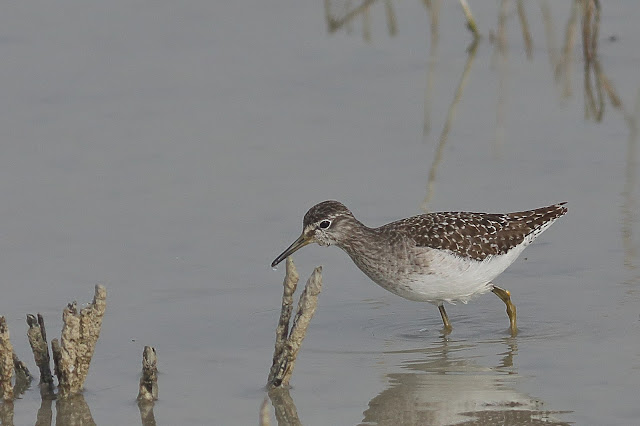


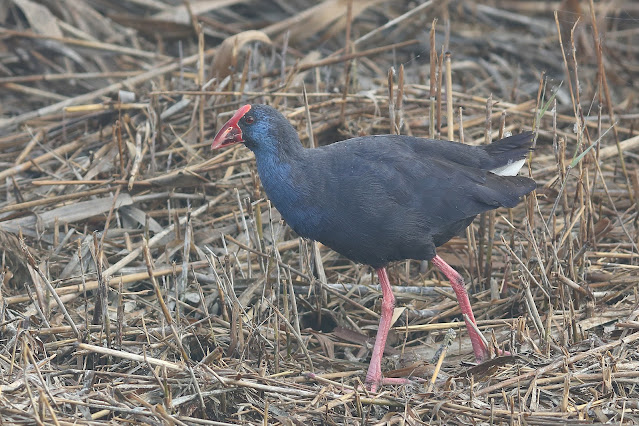












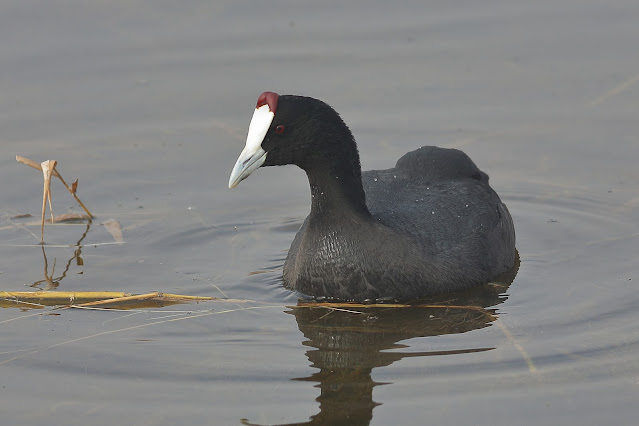


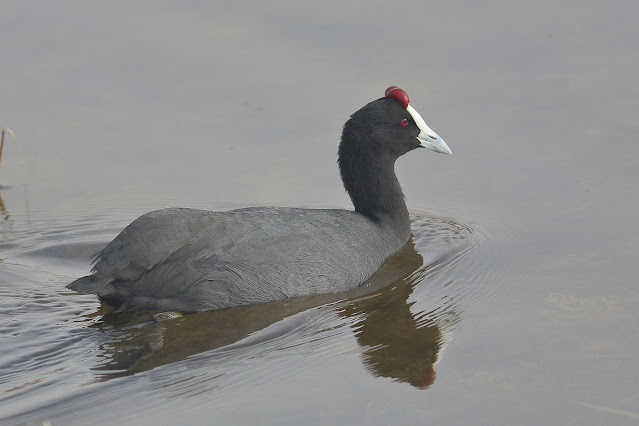







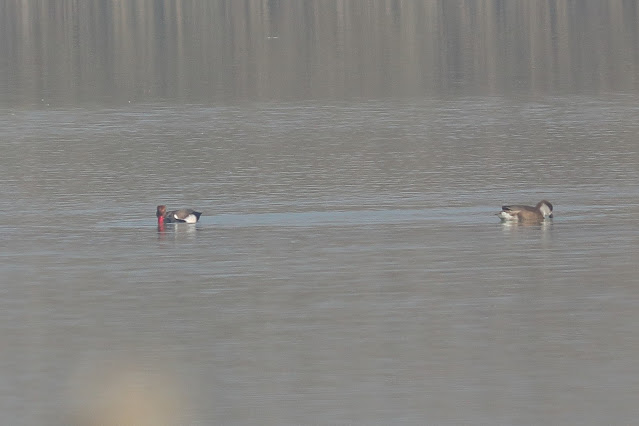












No hay comentarios:
Publicar un comentario